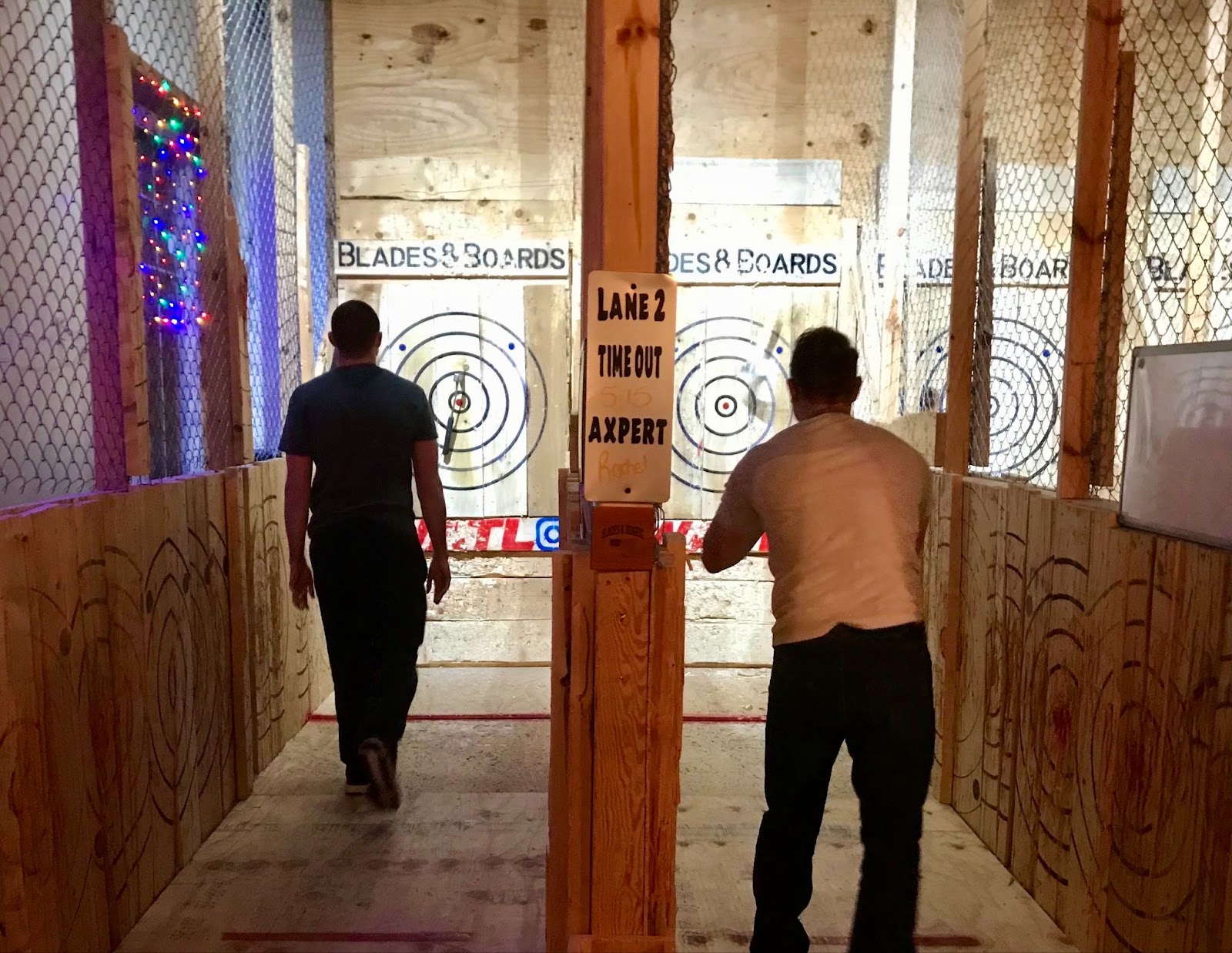Axe-throwing has surged in popularity as both a competitive sport and a fun, recreational activity. It’s a thrilling way to test your strength, accuracy, and focus. Whether you’re looking to impress at a local axe-throwing venue or simply want to master a new skill, learning how to throw an axe effectively is key. This blog post will guide you through the basics of axe-throwing, including safety tips, techniques, and how to improve your aim and consistency.

Understanding the Basics
Before diving into the technique, it’s essential to understand the equipment. Axes used for throwing are different from your typical chopping axe. They are lighter, with a shorter handle and a sharp, balanced blade. Choosing the right axe is crucial for both safety and performance.
Safety First
Axe-throwing can be dangerous if not done correctly. Always follow these safety tips:
- Ensure there’s no one between you and the target.
- Inspect the axe before use to make sure it’s in good condition.
- Wear closed-toe shoes and avoid loose clothing.
- Only throw when the range is clear and the area around the target is secure.
The Grip
Your grip on the axe is foundational to your throw. Hold the handle near the end for maximum leverage, using one or two hands. For beginners, a two-handed grip offers more stability and control. Wrap your fingers firmly around the handle, but don’t squeeze too tightly; a relaxed grip will improve your throw. Remember, the way you hold the axe can significantly impact its rotation and trajectory, so experimenting with slight adjustments can help find the most comfortable and effective grip for you. Additionally, ensure your hands are positioned symmetrically on the handle to promote a balanced throw.
Stance and Posture
Your stance is just as important as your grip. Stand with your feet shoulder-width apart, facing the target directly. If using a two-handed grip, align your dominant foot slightly behind; this will be your starting position. Your posture should be upright, with a slight bend in the knees to maintain balance and flexibility. It’s crucial to keep your body relaxed but ready to move, as stiffness can hinder the fluidity of your throw. Also, focus on distributing your weight evenly across both feet at the start, then smoothly transition your weight forward as you execute the throw to add power and precision.
The Technique
Throwing an axe involves three main phases: the wind-up, the release, and the follow-through.
Wind-up
Start by bringing the axe over your head, keeping your arms straight. The axe should be aligned with your spine, not tilted to one side. This movement should be smooth, preparing you for the throw. Ensure that during the wind-up, you engage your core to maintain control and balance, preventing any unnecessary movement that could affect the axe’s trajectory. Additionally, visualize the path of the axe as you prepare to throw, mentally rehearsing the motion to build muscle memory and confidence.
Release
As you bring the axe forward, shift your weight from your back foot to your front foot. Release the axe when it reaches eye level, aiming to keep the blade perfectly horizontal. The key is to release the axe without twisting your wrists; the rotation should come naturally from the motion and the axe’s design. It’s important to maintain a consistent release point for each throw, as variations can lead to inaccuracies. Practicing the timing of your release will greatly improve your ability to hit the target where you intend.
Follow-through
After releasing the axe, continue the motion of your arms towards the target. This follow-through ensures that your body’s momentum contributes to the axe’s flight, enhancing accuracy and distance. A proper follow-through also signals a complete and committed throw, preventing you from holding back or altering the throw’s dynamics mid-motion. Imagine your hands pointing directly at the target spot you aim to hit; this visualization can help guide the axe more accurately.
Practice and Patience
Like any skill, becoming proficient at axe-throwing requires practice and patience. Start by focusing on your technique rather than power. As you become more comfortable with the motion, you can gradually increase your strength. Set realistic goals for each practice session, and celebrate small improvements along the way to stay motivated. Remember, consistency is key; regular, focused practice sessions are more beneficial than occasional, lengthy ones, as they help build and refine your technique over time.
Advanced Tips for Axe-Throwing
Once you’ve mastered the basics, consider these tips to refine your technique:
Focus on the Target
Adjust Your Distance
Finding the right distance from the target is crucial. Too close or too far can affect the axe’s rotation and your ability to hit the target accurately. Start at around 12 to 15 feet away and adjust as needed. Experiment with small adjustments forward or backward to find the sweet spot where the axe consistently sticks to the target. Paying close attention to the axe’s rotation will help you determine the best position for your throws.
Analyze Your Throws
Pay attention to where the axe hits the target. If it’s consistently too high or too low, adjust your release point. If the axe is rotating too much or too little, adjust your distance from the target. Recording your throwing sessions can provide valuable insights, as you can review your technique and body mechanics. This analysis can reveal patterns that may not be noticeable in the moment, allowing for more targeted adjustments.
Practice Consistency
Repetition is key to consistency. Try to replicate the exact same motion with each throw. This consistency will help you develop muscle memory, making accurate throws more intuitive. Consistent practice not only refines your technique but also builds confidence in your ability to hit the target. Set a routine for your practice sessions, including warm-up exercises that mimic the throwing motion, to enhance muscle preparedness and focus.
Joining the Community
Axe-throwing is not just about individual skill; it’s also a social activity. Many cities have axe-throwing clubs or venues that host leagues and competitions. Joining one of these communities can provide valuable tips from experienced throwers and add a competitive edge to your practice.

Learn More About Axe-Throwing Techniques
Axe-throwing is an exhilarating sport that combines physical skill with mental focus. By following the tips and techniques outlined in this guide, you’ll be well on your way to mastering this ancient art. Remember, the key to success in axe-throwing, as in any sport, lies in practice, patience, and a willingness to learn from each throw. So grab an axe, stay safe, and start throwing!
Check out our Propel Axe blog to learn more about our axe-throwing events near you!


 720-330-9755
720-330-9755
